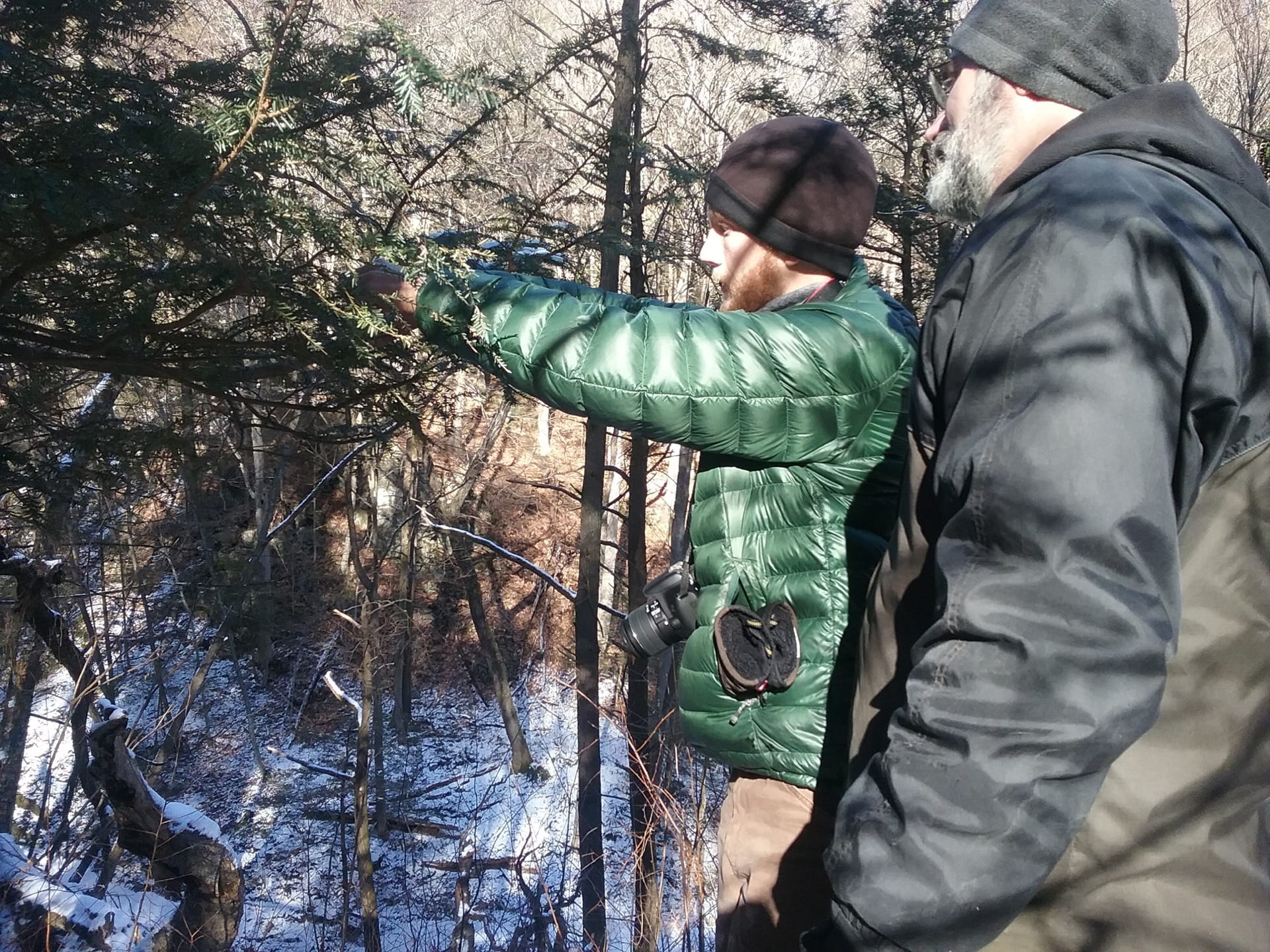Landowner Hemlock Prioritization Toolkit
As a forest owner, figuring out which forest problems to address can be challenging. Hemlock is just one of many tree species you probably have on your property; why should they get your time and attention?Hemlocks provide some services that other species can’t, supporting both land species and stabilizing stream habitats. They also provide a unique environment for you to enjoy on your property. Hemlock woolly adelgid (HWA) can kill all of the hemlocks on your property if left untreated, but the available treatments work very well and are effective for several years. Whether you own a handful of hemlocks or hundreds of acres of them, this tool can help you think through what value your hemlocks bring to your property, and which hemlocks are the most important to conserve.

Prioritization of hemlock stands helps landowners make HWA management and treatment decisions by clarifying their hemlocks’ conservation values. Hemlocks may provide aquatic ecosystem services by keeping trout streams cool and stabilizing stream flow, or grow near trails or buildings where they will become hazards as they die. Hemlocks may be creating the habitat for a rare species, or be a place where a landowner likes to picnic with their grandchildren. How do you choose which hemlocks to preserve?
To use the landowner toolkit, look through the toolkit description and think about how each trait applies to your hemlock stands. If any of the special cases apply to any of your stands, don’t worry about ranking those stands; you can just treat or not depending on which special case applies.

When you’re ready, open the Excel spreadsheet tool, which has three pages. The left-most one is a key, with suggested scores for each trait from the description. The other two pages are places to enter your data and score your stands.
Both pages are exactly the same, but one is arranged horizontally and the other vertically; use whichever one you like to list your stands and estimate scores for as many traits as you can. Once you’ve done that, each stand will get a final score; the stands with the highest scores are the most important to preserve.
Each of the many traits are weighted so that the most important traits to forests and streams have more impact on the final score. You can change those weights to better reflect your values; if your property is a trout fishing destination, perhaps you might make the aquatic services more heavily weighted for your property. If your property has public hiking trails, perhaps hazard trees and public education factors should rank higher. If you don’t have information on some of the traits, that’s fine; leave that trait blank for all your stands, and the tool will still work for you.
Whatever values you wish to conserve, our tools can help compare and score multiple hemlock stands to optimize your management efforts.
